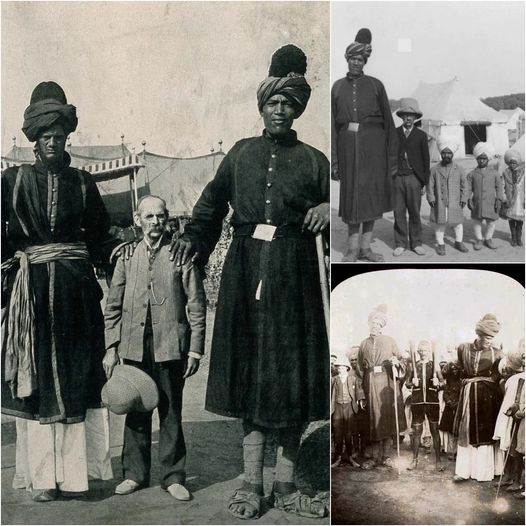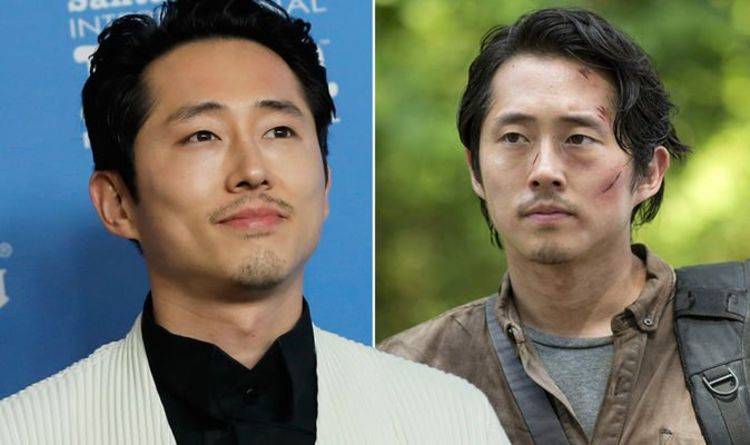
The 1903 Delhi Durbar was an event of immense significance in the history of British India. It was a grand spectacle held in honor of the coronation of King Edward VII and Queen Alexandra as Emperor and Empress of India. The Durbar was an occasion for the British authorities to display their power and authority to the Indian people and to showcase the grandeur of the British Empire. It was also a platform for the Indian rulers and nobility to pay homage to the British monarch and pledge their loyalty to the Crown.
One of the most unforgettable and iconic features of the 1903 Delhi Durbar was the presence of the "Kashmir Giants".
These were a group of exceptionally tall men from the Himalayan region of Kashmir, who were brought to the Durbar to serve as guards and ceremonial attendants. Their towering stature and imposing physical presence made them a sensation at the Durbar, and they left a lasting impression on all who witnessed their extraordinary presence.
The Kashmir Giants were brought to the Delhi Durbar by the British authorities to serve as a symbol of the might and power of the British Empire. The men were recruited from the remote and rugged mountains of Kashmir, where they were renowned for their extraordinary height and strength.
The British had long been fascinated by the idea of using the physical attributes of the people of the Himalayas to enhance their own image of power and authority in India, and the 1903 Delhi Durbar provided an ideal opportunity to showcase these men to the Indian and international audience.
The group of Kashmir Giants consisted of around two dozen men, all of whom were over seven feet tall and possessed remarkable physical strength and endurance. They were dressed in traditional Kashmiri attire, with brightly colored robes and turbans, and they carried enormous spears and shields that added to their imposing presence.
They were stationed at strategic points around the Durbar grounds, where they stood guard and performed ceremonial duties, such as escorting important dignitaries and participating in the grand processions and parades.
The presence of the Kashmir Giants at the Delhi Durbar had a profound impact on the Indian people and the international audience. For many Indians, the sight of these towering men from the mountains of Kashmir was both awe-inspiring and deeply unsettling. The sheer size and physical presence of the Giants seemed to symbolize the overwhelming power and dominance of the British Empire, and their role as ceremonial guards and attendants reinforced the image of the British as invincible rulers.
On the international stage, the Kashmir Giants became a sensation, with newspapers and magazines around the world featuring stories and photographs of these extraordinary men. They were depicted as larger-than-life figures, embodying the imperial grandeur and exotic allure of British India. Their presence at the Delhi Durbar added to the aura of spectacle and wonder that surrounded the event, and they became iconic symbols of the power and splendor of the British Empire.
However, while the Kashmir Giants may have been celebrated as symbols of British imperial might, their actual experiences at the Delhi Durbar were likely far from glamorous.
It is probable that they were recruited and brought to the event under less than ideal circumstances, and their role as exotic curiosities and ceremonial props may have overlooked their individual humanity and dignity. The physical and psychological toll of being put on display as exotic specimens for the amusement of others cannot be overlooked, and the Kashmir Giants' experiences at the Delhi Durbar likely had a complex and ambiguous impact on their lives.
In the years that followed the 1903 Delhi Durbar, the memory of the Kashmir Giants faded from popular consciousness, and they became little more than a footnote in the history of British India.
However, their presence at the Durbar continues to resonate as a powerful symbol of the complex dynamics of power, authority, and representation in the context of colonialism and imperialism. The story of the Kashmir Giants serves as a reminder of the ways in which physicality and spectacle have been used to reinforce and perpetuate structures of dominance and control, and it invites us to reflect on the legacies of that history in our own time.
In conclusion, the unforgettable presence of the Kashmir Giants at the 1903 Delhi Durbar was a testament to the enduring impact of their extraordinary physical stature and their role as symbols of British imperial power.
Their towering presence continues to echo through the annals of history, reminding us of the complex and often uncomfortable intersections of power, representation, and identity in the context of colonialism and empire. The story of the Kashmir Giants serves as a poignant and thought-provoking chapter in the larger narrative of British India, and it invites us to consider the lasting legacies of that past in our contemporary world.




















